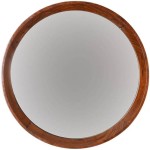Mirror Android Phone To Smart TV
Mirroring an Android phone to a smart TV allows users to enjoy mobile content on a larger screen. This offers a more immersive experience for activities such as watching videos, playing games, and presenting slideshows. Several methods facilitate this screen mirroring, each with its unique advantages and disadvantages.
Wireless Mirroring Methods
Wireless mirroring offers convenience and flexibility, eliminating the need for cables. Popular wireless mirroring methods include:
* Chromecast built-in: Many modern smart TVs come equipped with Chromecast functionality, allowing direct mirroring from compatible Android devices. * Chromecast dongle: An affordable external device that plugs into the TV's HDMI port, enabling Chromecast features on non-compatible televisions. * Miracast: A standard for wireless connections between devices, allowing screen mirroring between compatible Android phones and TVs. Availability varies depending on device models. * Smart TV apps: Several smart TV manufacturers offer proprietary apps that enable screen mirroring from compatible Android devices within their ecosystem.Wired Mirroring Methods
Wired mirroring provides a more stable and reliable connection, particularly beneficial for activities requiring minimal latency, such as gaming. The most common wired method involves:
* USB-C to HDMI cable: This method utilizes the USB-C port on the Android phone (if available) to connect directly to the TV's HDMI port. This often requires an adapter or cable specifically designed for video output. This method offers the most stable connection with minimal latency.Mirroring with Chromecast Built-in
Mirroring with Chromecast built-in involves a straightforward process:
* Connect the Android device and the smart TV to the same Wi-Fi network. * Open the app that supports casting, such as YouTube or Netflix. * Tap the cast icon, usually located in the upper right corner of the app interface. * Select the Chromecast-enabled TV from the list of available devices.Mirroring with a Chromecast Dongle
Using a Chromecast dongle follows a similar process to built-in Chromecast:
* Plug the Chromecast dongle into an available HDMI port on the TV. * Connect the Android device and the Chromecast dongle to the same Wi-Fi network. * Download and install the Google Home app on the Android device. * Follow the on-screen instructions within the Google Home app to set up the Chromecast dongle. * Open a casting-enabled app and tap the cast icon. * Select the Chromecast dongle from the list of available devices.Mirroring with Miracast
Miracast offers a more direct device-to-device connection:
* Ensure both the Android device and the smart TV support Miracast. * Enable Miracast on both devices. The exact process may vary depending on the device manufacturer and model. Consult the device manuals for specific instructions. * On the Android device, locate the screen mirroring or wireless display option, often found in the display settings or quick settings menu. * Select the Miracast-enabled TV from the list of available devices.Mirroring with Smart TV Apps
Mirroring through Smart TV apps involves manufacturer-specific procedures, but generally follows these steps:
* Ensure both the Android device and the smart TV are compatible with the manufacturer's app. * Download and install the required mirroring app on both the Android device and the smart TV. * Launch the app on both devices. * Follow the on-screen instructions within the app to establish a connection.Mirroring with USB-C to HDMI Cable
Utilizing a USB-C to HDMI connection provides a wired, stable connection:
* Connect the USB-C end of the cable to the Android device's USB-C port. * Connect the HDMI end of the cable to an available HDMI port on the TV. * Select the appropriate HDMI input source on the TV using the remote control. * The Android device's screen should be mirrored on the TV.Troubleshooting Mirroring Issues
Common issues and troubleshooting steps include:
* Network connectivity: Ensure both devices are connected to the same Wi-Fi network and that the network is functioning correctly. Restarting the router can often resolve network-related problems. * Device compatibility: Verify both the Android device and the TV support the chosen mirroring method. Consult device manuals for compatibility information. * Software updates: Ensure both devices are running the latest software updates. Outdated software can sometimes cause compatibility issues. * App compatibility: Ensure the app being used supports screen mirroring. Not all apps offer this functionality. * Physical connections: For wired connections, ensure the cable and ports are functioning correctly. Try a different cable or port to rule out hardware issues.Optimizing the Mirroring Experience
Several tips can improve the overall mirroring experience:
* Reduce interference: Minimize other Wi-Fi activity in the area to improve the stability of wireless connections. * Adjust screen resolution: Check the display settings on the Android device to optimize the resolution for the TV screen. * Disable notifications: Silence notifications on the Android device to avoid interruptions during mirroring. * Adjust volume levels: Control the volume using either the TV remote or the Android device's volume controls. * Battery consumption: Wireless mirroring can consume significant battery power. Consider keeping the Android device plugged in while mirroring.
How To Mirror From Your Samsung Smartphone Tv

Top 3 Ways To Screen Mirror Android Sony Tv

How To Mirror Your Android Phone A Tv 3 Easy Ways Zdnet

Miracast 7 Facts You Should Know Before Using On Android

What Is Screen Mirroring And How Do I Use It With My Samsung Tv Mobile Device

How Free Mirror Android Phone To Tv Imobie

How To Mirror Android Philips Tv

How To Mirror An Android Device On Your Tv Cnet

How To Connect An Iphone Or Android Smartphone Your Tv

How To Mirror Your Android Phone A Tv 3 Easy Ways Zdnet








